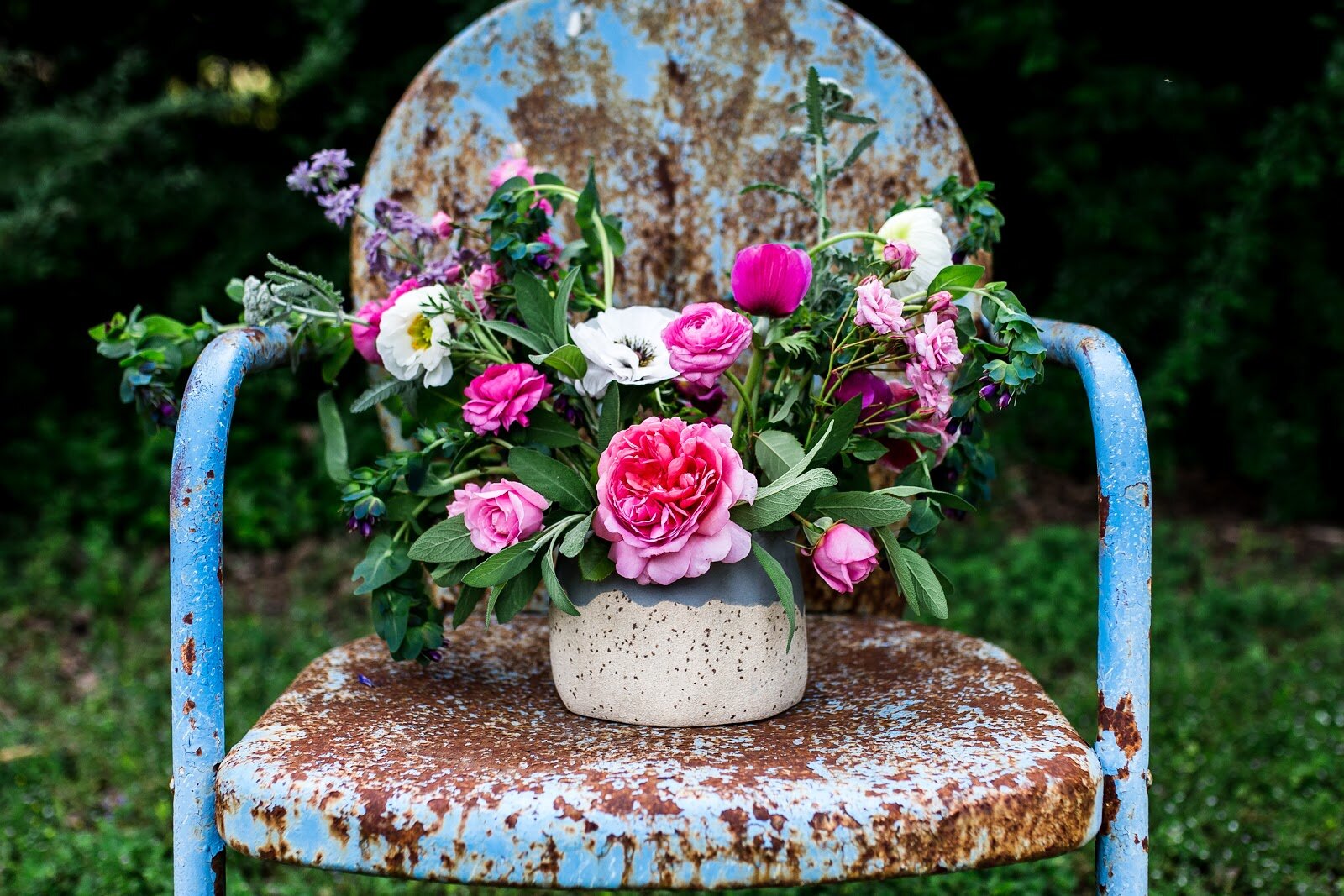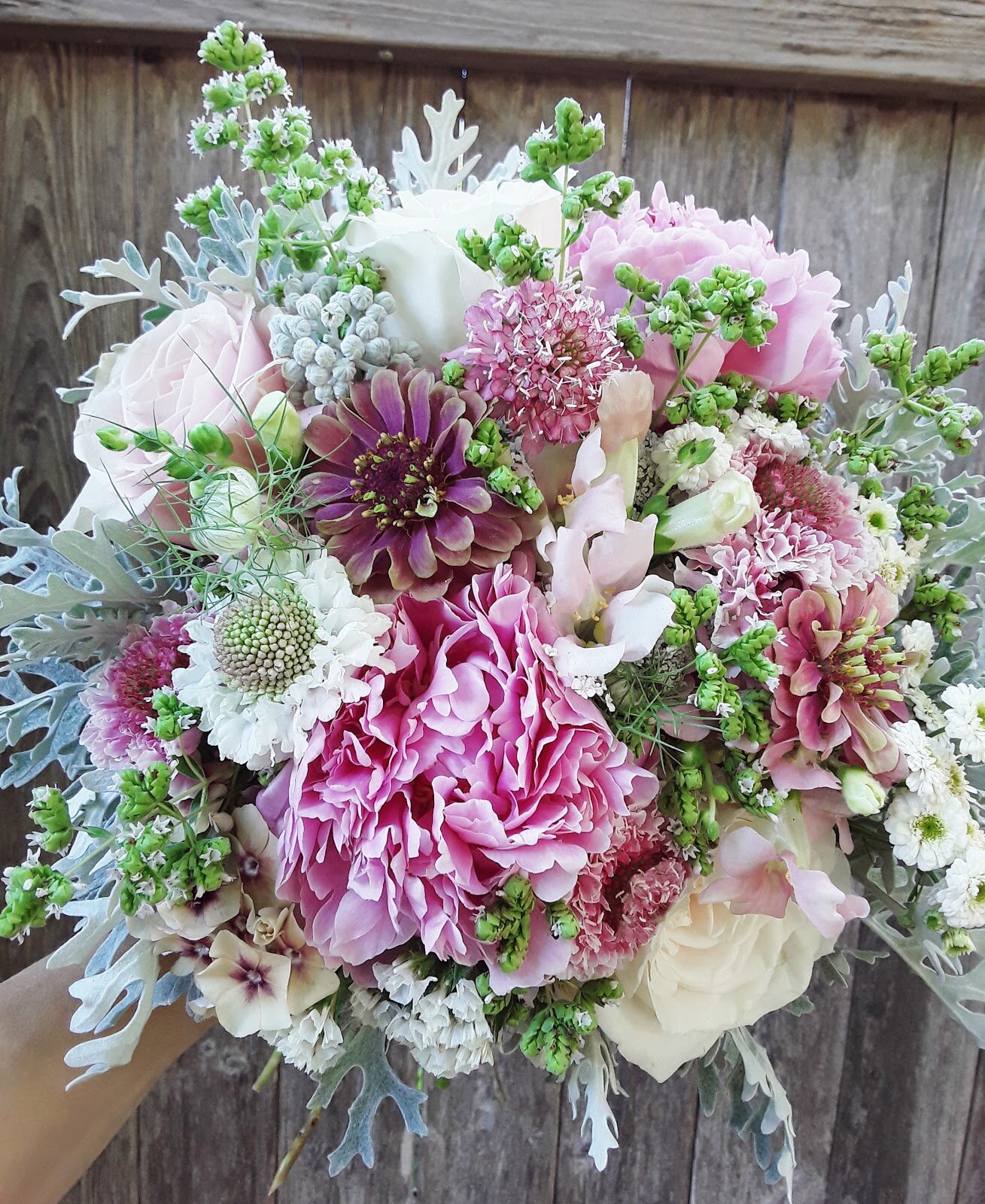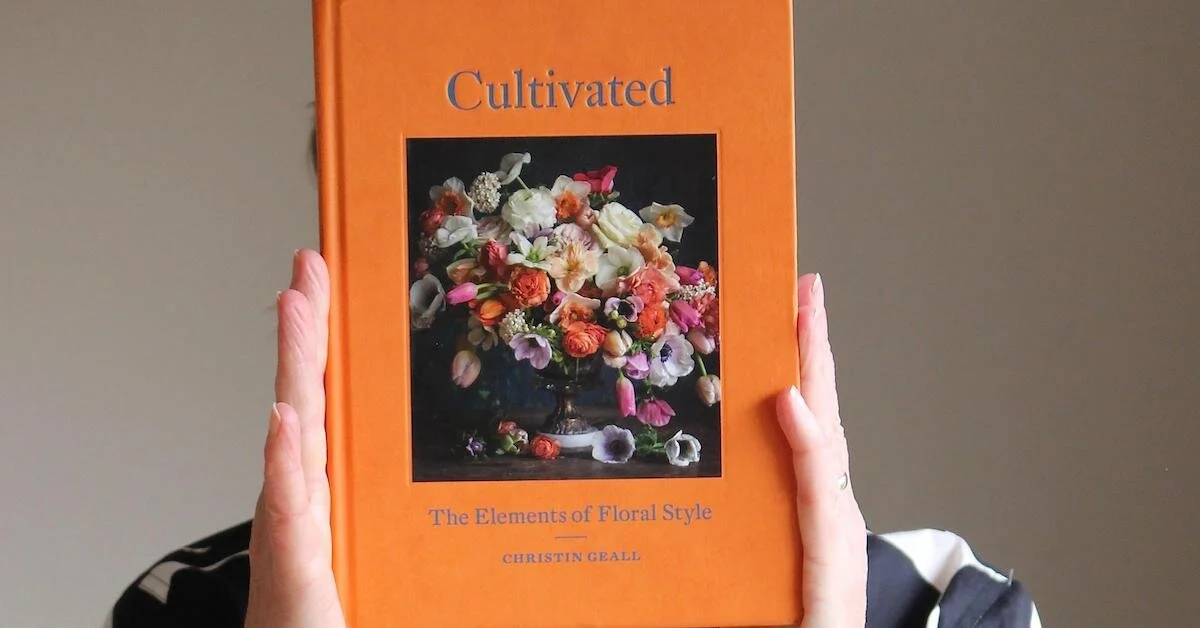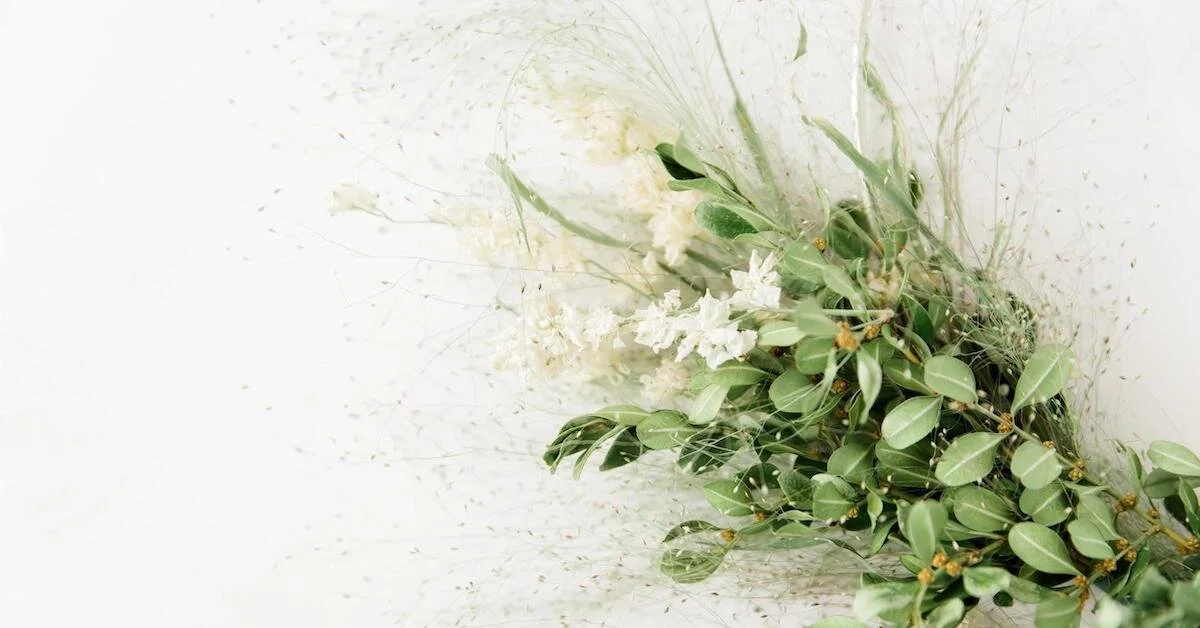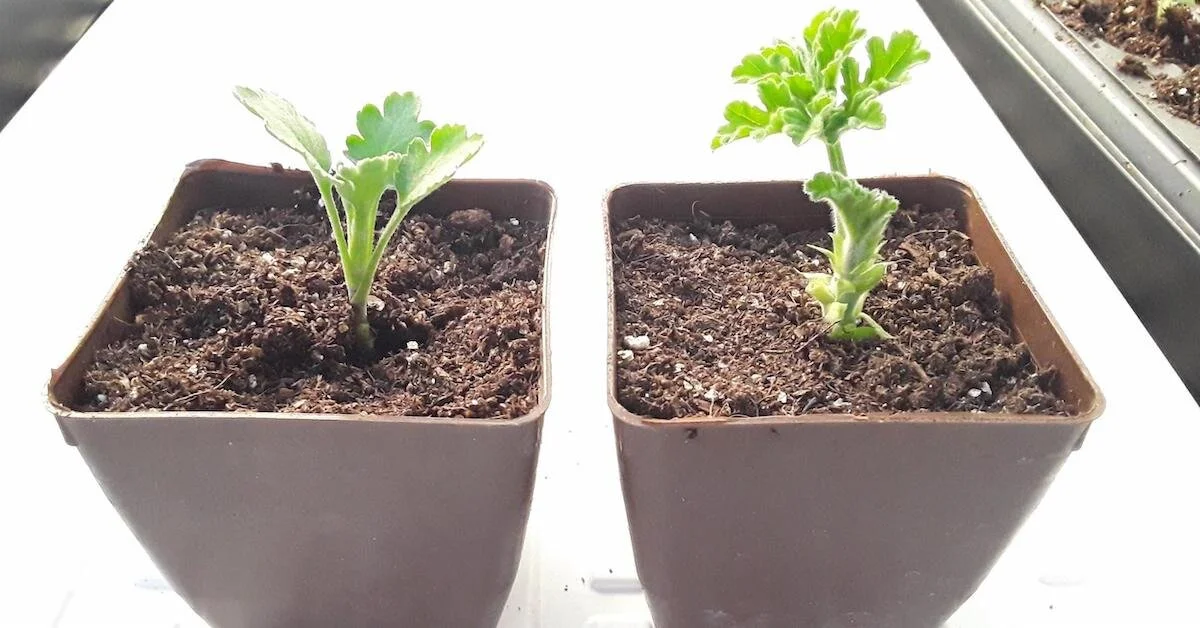9 Herbs You Should Be Growing for Flower Arranging
Sage surrounds the garden rose with soft green foliage and a graceful drape.
The herb has long been considered the humble workhorse of the garden, providing easy-to-grow, pleasing-to-the-eye plants that earn their space with contributions to the kitchen table. Their contributions, however, can go far beyond the plate. They deserve equal attention within cut flower arranging.
The best herbs for flower arranging are those that can be easily grown, hydrated without difficulty, and hold in the vase longer than five days. Below are nine herbs to get you started!
Sage
Sage is an often-overlooked herb for cut flower arrangements. It has a beautiful soft green color, and the back of the leaf is as pretty as the front. A perennial plant, it survives winter in most growing zones. In warmer zones, it should be planted where it receives shade from the hot afternoon sun. Summer water is required, though sage is virtually maintenance-free and grows larger with each passing year. Mature woody stems should be cut early in the morning and put into cool water for up to 4 hours to prevent wilting.
A bouquet using green oregano stems with tiny white flowers.
Oregano
Oregano is an excellent herb for flower arranging, as it’s easy to grow and produces beautiful little white flowers in the height of summer. The stems may not get taller than 14 inches and it doesn’t produce much bulk. However, it is easy to grow and the seed heads add sparkle and dimension to a bouquet. While there are fancy oregano varieties, the basic perennial Italian oregano is easy and wonderful to work with. Plant in full sun and be sure to water in the summer, but otherwise, it is maintenance-free. When not using it in your bouquets, you can add it to your pasta!
Mint
Apple mint is the best annual mint for cut flower use. It can be invasive, so grow it in a container or raised bed and be sure to cut often. The stems are not very long, but the fresh scent and bright green leaves are a gorgeous complement to so many of spring’s sweet pastels and summer’s vivid colors. It’s also a perennial! As a bonus, if not sprayed with chemicals while growing, then you can pluck it straight from the garden to add to your summer mojito.
Lavender
Lavender prefers dry and hot growing conditions. If you have water-logged or clay soil, it can be challenging to get a lavender plant established. But once a plant takes hold, it lasts with little attention and winter doesn’t bother it. While the leaves and stems are not super beefy, the fantastic grey-green color and scent make it indispensable to a summer bouquet and adds a level of freshness almost unparalleled by any other herb. It’s also fantastic in earl grey tea.
Bee Balm Growing
Bee Balm (Wild Bergamot)
There are fancy Bee Balm varieties, but the easiest to grow is the wild bergamot. As a perennial, it is tall-stemmed, wonderfully scented, and holds up well in a bouquet if harvested early in the morning. It should be picked partly opened and will continue to elongate in the bouquet, so plan for that in your design. As with most of these herbs, it makes a refreshing tea—it’s spicy and somewhat tastes like licorice.
Feverfew
This herb has both substantial foliage and delicate little flower heads. Though it is not a perennial in most growing zones, it is easy to grow from seed starting in early spring when cool weather helps it get established. The healing properties of feverfew tea are well documented. Some people can detect an unpleasant smell when harvesting, but that diminishes as time goes on. In late spring to early summer, you can expect to harvest long stems, which last at least a week in the vase.
Basil
This summertime staple is equally indispensable in design work. The full leaves with variations of color—from dark veins to fresh green depending on the cultivar and along with its mild fresh scent—make this foliage an excellent choice. It can be tricky to hydrate when summer temperatures soar, but careful hydrating always helps it bounce back and hold. You can cut from one plant throughout the entire summer, but be sure to cut mature woody stems very early in the morning. Plant in part-shade in the south but full sun in the north. Basil dies with the first frost but easily reseeds itself. If necessary, a handful of seeds in spring will usually do the trick for fresh plants. However, here’s one cautionary tip: Do not put basil in the cooler, it will turn black.
Summer wedding pieces using sprigs of rosemary, sage, oregano, and lavender.
Rosemary
This herb also prefers hot and dry climates. While rosemary is generally considered extremely easy to grow, if your soil does not drain well, it might be hit or miss. A lot of rosemary is needed to make an impact since its leaves are small and thin, but the smell of rosemary is enough to warrant its use in an arrangement, and it brings a touch of darker green foliage in the middle of summer. Plus, it lasts exceptionally long in the vase (or out of water on a boutonniere) and never has wilting issues. The cold doesn’t bother it, and it overwinters well in warm zones, often as an evergreen. If happy, a rosemary plant can grow to massive proportions, and one plant can provide all the cuttings you’ll ever need.
Fennel
Fennel has lacy yellow umbels that make it unique and desirable as a design element. It can have a pungent smell when harvesting and working with it. A drop of bleach to the holding water will help with this. The stalks can be thick and awkward to work with, but it is super easy to grow and has a beautiful airy quality to its ferny foliage. The foliage resembles asparagus ferns, but unlike traditional ferns, it doesn’t require a cool, moist environment to thrive. It’s a short-lived perennial, and it likes cooler conditions to start growing and warmer conditions to bloom. Grow in full sun, but keep in mind that summer watering is necessary.
Give herbs a try in your next arrangement and discover their beautiful contribution. They’re inexpensive and readily found at stores; plant them in your landscape for easy growing, beautiful foliage, and interest both outside and inside.
Happy growing!


